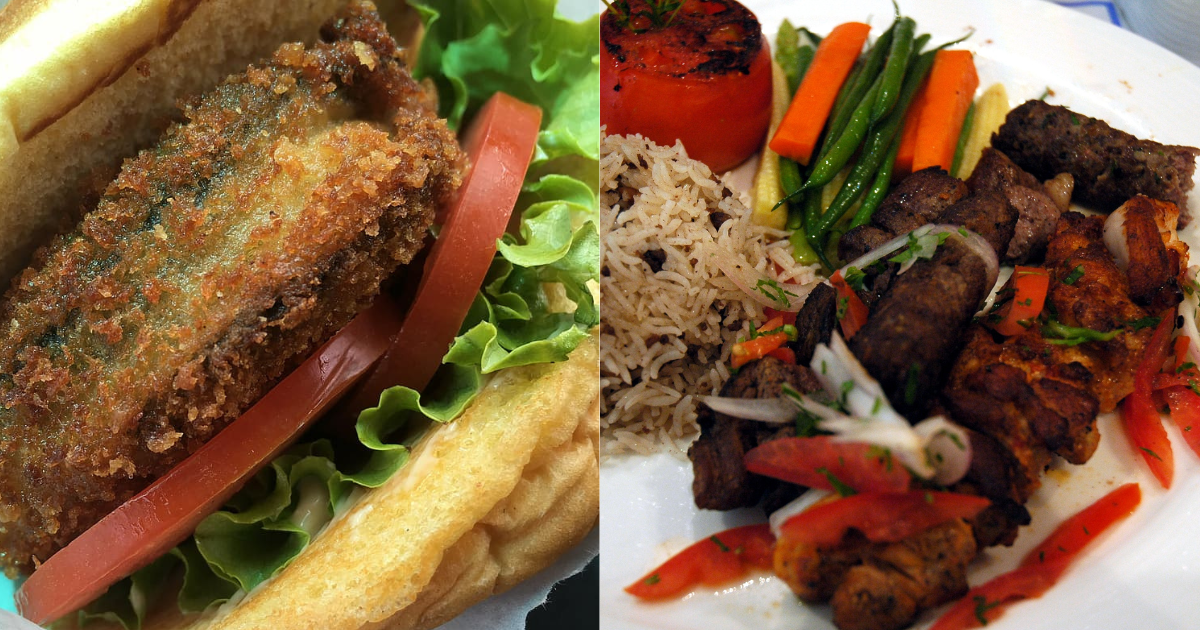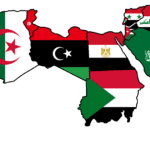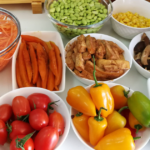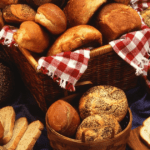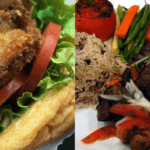Embarking on a Multifaceted Gastronomic Exploration
Venturing into the rich tapestry of culinary traditions that interlace the vibrant realms of American and Arab cuisines is akin to embarking on a captivating odyssey. In the kaleidoscope of global gastronomy, these two cultures stand out not only for their distinctiveness but also for the surprising intricacies that weave them together.Now we will go through what is common in american and arab food.
Table of Contents
The Unifying Charisma of Grilled Mastery
Delving into the intricacies, one encounters a magnetic pull toward the artistry of grilling. This shared fascination transcends geographical boundaries, as the United States revels in the culinary spectacle of barbecue culture, while the Arab world succumbs to the allure of the tantalizing scents wafting from skewers and grates.
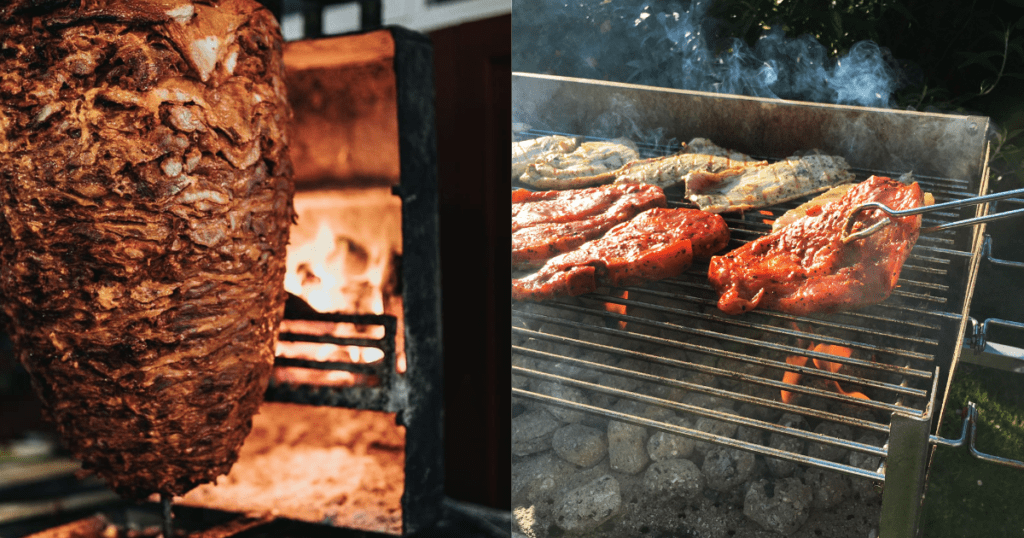
Spices: A Ballet of Complexity and Harmony
As the culinary odyssey unfolds, the complexity of flavor becomes a central theme. American and Arab kitchens, seemingly disparate in their spice palettes, converge in a ballet of complexity. While Cajun spices reign in the American South, Arab dishes dance with the nuanced symphony of cumin, coriander, and the citrusy allure of sumac.
Bread as the Culinary Chameleon
In this gastronomic mosaic, an unsung hero emerges—the humble bread. Beyond its utilitarian role, bread metamorphoses into a culinary chameleon, adapting to the essence of each culture. In the American South, cornbread exudes a sweet aroma, mirroring the soft, pillowy texture of Middle Eastern pita, both becoming vessels for the collective enjoyment of flavors.
The Satisfying Cadence of Sweet Culmination
The sweetness that concludes a meal, a universal indulgence, intertwines the palates of these diverse traditions. From the comforting slice of apple pie in the United States to the intricate layers of baklava in the Arab world, the culinary odyssey takes a harmonious turn towards a shared appreciation for the decadence of dessert.
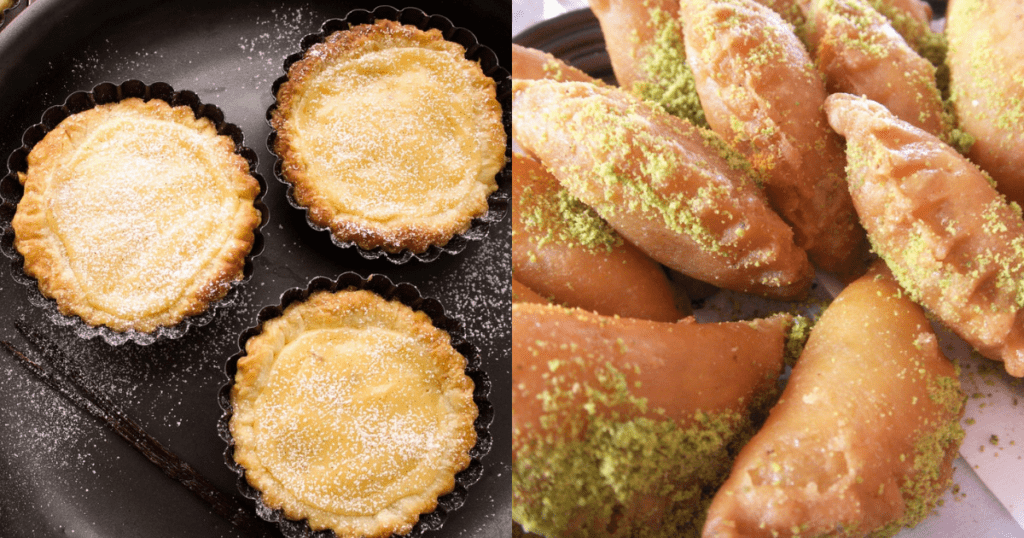
Hospitality and Generosity: A Culinary Emanation
Beyond the culinary creations, the essence of hospitality emanates as a unifying force. Whether nestled in the southern warmth of the United States or enveloped in the Arab tradition, the table becomes a sacred space where guests are not mere diners but cherished participants in a ritual of shared generosity and warmth.
Indigenous Ingredients: A Culinary Ode to Roots
A closer examination peels back layers to reveal the deep connection both cuisines maintain with indigenous ingredients. Native American influences echo in succotash, mirroring the Arab reliance on the bounty of the Mediterranean—olives, figs, and fragrant herbs—an ode to roots that ground and define culinary identity.
Hearty Stews and the Allure of Slow Simmering
The allure of slow-cooked, hearty stews permeates both culinary landscapes, akin to a culinary lullaby soothing the senses. Whether savoring the American classic, chili con carne, or partaking in the aromatic symphony of Arab tagines, the shared appreciation for the meditative process of slow simmering emerges as a harmonious note.
Coffee: More Than a Brew, a Cultural Ritual
Amidst this culinary journey, the ritual of brewing and sipping coffee surfaces as a cultural touchstone. In the United States, the morning cup is a ubiquitous companion, while in the Arab world, the rich, aromatic traditions of coffee brewing transcend the mundane, embodying hospitality and camaraderie in each carefully poured cup.

Festive Traditions: A Culinary Symphony
Festivals become the crescendo in this culinary symphony, binding communities through shared traditions. From the grandeur of Thanksgiving feasts in America to the jubilant celebrations of Eid al-Fitr in the Arab world, culinary traditions take center stage, transforming meals into sacred rituals of joyous communion.
Fusion: A Culinary Kaleidoscope
The concluding act of our culinary odyssey unveils the art of fusion. Both American and Arab cuisines, while preserving their authenticity, embrace a kaleidoscope of influences. American regional specialties showcase a harmonious blend of Native American, European, African, and Asian flavors, mirroring the mosaic found in Arab cuisine—a testament to the ever-evolving nature of culinary identity.
In Conclusion: A Tapestry of Shared Humanity
As we navigate the intricacies and complexities of the culinary union between American and Arab flavors, we unearth not only a shared love for gastronomy but a tapestry woven with threads of shared humanity. The perplexity and burstiness found in the merging of these two culinary worlds are not mere nuances; they are reflections of the intricate dance that is the human experience.
Frequently Asked Questions (FAQs)
Q1: Are there specific dishes that exemplify the intricate fusion of American and Arab cuisines?
A: While specific dishes may not overtly merge American and Arab elements, the fusion lies in the interplay of diverse flavors and culinary techniques, resulting in a nuanced and captivating gastronomic experience.
Q2: Does the significance of bread in both cultures extend beyond mere sustenance?
A: Indeed, bread holds cultural significance beyond its utilitarian role. It metamorphoses into a culinary chameleon, adapting to the essence of each culture and becoming a symbol of communal sustenance and hospitality.
Q3: What role do indigenous ingredients play in American and Arab cuisines?
A: Indigenous ingredients serve as a culinary ode to roots, connecting both American and Arab cuisines to their respective histories. Native American influences in the U.S. and the bounty of the Mediterranean in the Arab world define and ground culinary identities.
Q4: How has globalization impacted the exchange of culinary traditions between America and the Arab world?
A: Globalization has facilitated the exchange of culinary ideas, ingredients, and techniques, fostering a more interconnected culinary landscape where the interplay of diverse influences thrives, creating a tapestry of gastronomic richness.
